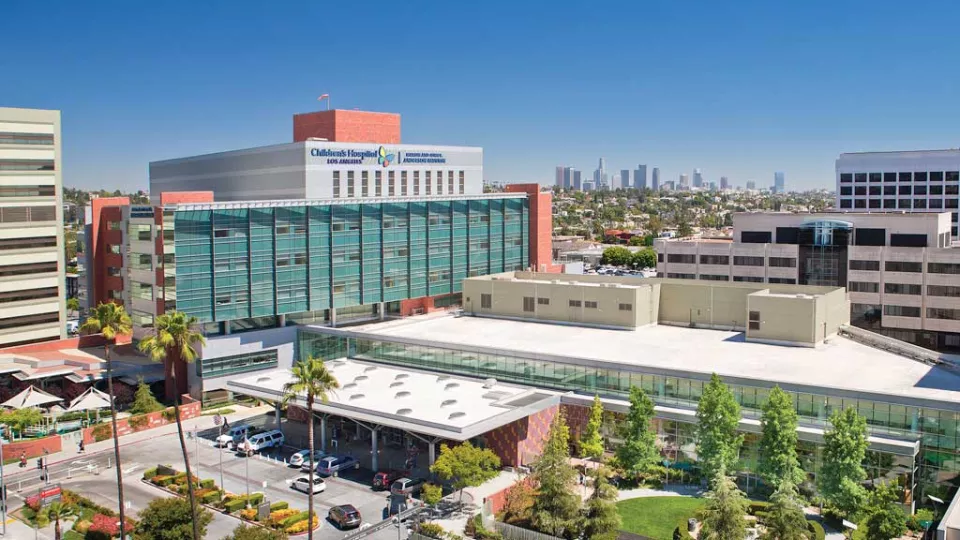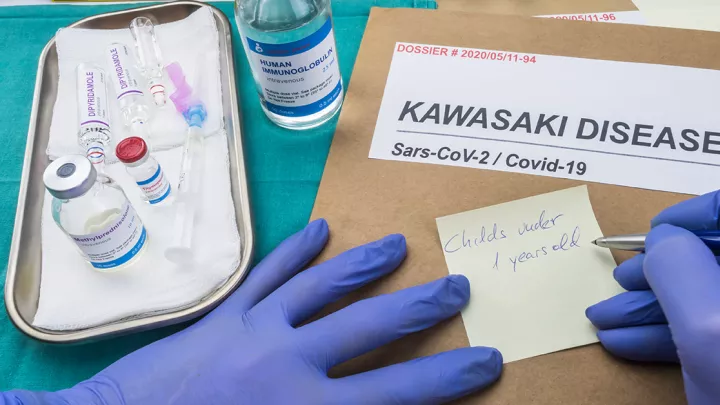
MIS-C Patients At Risk for Coronary Artery Aneurysms

Since the pandemic began, Children’s Hospital Los Angeles has treated 26 cases of multisystem inflammatory syndrome in children (MIS-C)—a new and serious condition associated with COVID-19.
One cardiac issue the team is seeing in some patients is coronary artery aneurysms. Cardiologist Jacqueline Szmuszkovicz, MD, and a team from the Heart Institute at Children’s Hospital Los Angeles will report on these findings in a poster presentation at the American Heart Association Scientific Sessions 2020. The virtual meeting will be held Nov. 13-17.
“We have seen significant issues with coronary artery aneurysms in MIS-C,” says Dr. Szmuszkovicz. “Some centers are reporting seeing no coronary artery changes in their MIS-C patients, but our findings have been different.”
Justin Pick, MD, and Shuo Wang, MD, are first authors on the poster, and Jodie Votava-Smith, MD, is the senior author. Co-authors include Sharon Wagner-Lees, RN; Sarah Badran, MD; Dr. Szmuszkovicz; and Pierre Wong, MD.
Overnight coronary changes
The Heart Institute team has found that coronary artery aneurysms can evolve rapidly in MIS-C patients.
“We know from Kawasaki disease (a syndrome that shares some clinical similarities with MIS-C) that patients are at great risk when their coronaries are enlarging rapidly like this,” Dr. Szmuszkovicz says. “That’s when they are at the greatest risk for forming a clot in the coronary artery, which puts them at risk of a heart attack.”
To prevent that chain of events, the team has developed a protocol to perform frequent echocardiograms—every one to two days—on MIS-C patients who have evolving coronary artery abnormalities.
“We’ve seen echocardiographic changes that can be quite dramatic, even over a 24-hour period,” Dr. Szmuszkovicz notes. “It’s important to pick up on those changes very quickly, so we can respond by adjusting their anti-thrombotic medicine.”
It’s also important to recognize early on when a child might have MIS-C. “This syndrome can mimic so many other diseases,” she says. “Prompt recognition of MIS-C allows us to create an individualized treatment plan right away, avoid fluid overload and start appropriate medications to support the heart support early on, before serious damage occurs.”
Follow-up and research
Children’s Hospital Los Angeles takes a multidisciplinary approach to MIS-C care, involving specialists in Cardiology, Infectious Diseases, Hematology, Immunology, Intensive Care, Rheumatology, Hospital Medicine, Emergency Medicine and more.
In addition, the team has formed a follow-up clinic for patients who have had a cardiac involvement after COVID-19 or MIS-C. The Cardiology team providing close short- and long-term follow-up for these patients includes Dr. Szmuszkovicz, Dr. Badran, and Nurse Care Manager Sharon Wagner-Lees.
“We have a dedicated team for these patients,” Dr. Szmuszkovicz says. “Dr. Badran has been seeing children who are not diagnosed with MIS-C but who have concern for possible COVID-related disease (including MIS-C) and need to be monitored by a cardiologist. We work closely in the outpatient setting with infectious disease specialists, as well as hematologists if the patient needs anticoagulants.”
Children’s Hospital Los Angeles has a long legacy of expertise in Kawasaki disease, and the Heart Institute was at the forefront of early recognition of MIS-C. In April and May, the team noticed a remarkable uptick in patients presenting with features of Kawasaki-like disease, including some patients who had shock.
The team’s research on MIS-C is conducted as part of The Saban Research Institute of Children’s Hospital Los Angeles. In addition to investigating coronary artery abnormalities, The Heart Institute is working with the Division of Infectious Diseases on a genetics study in MIS-C. The team is also collaborating with multiple institutions throughout the U.S. and Canada and is gearing up to participate in four multicenter clinical trials in MIS-C.
That collaborative focus has been key to the team’s approach to understanding this serious new condition in children and adolescents. Another key: staying flexible in the face of constant change.
“In the beginning, no one had seen MIS-C before,” she says. “We’re now getting to the point where we have a consensus about how to approach it. But we’re still learning every day. There’s nothing about COVID-19 that’s standing still.”


